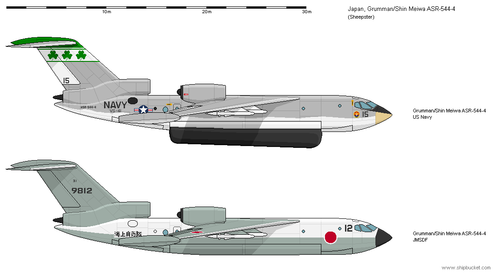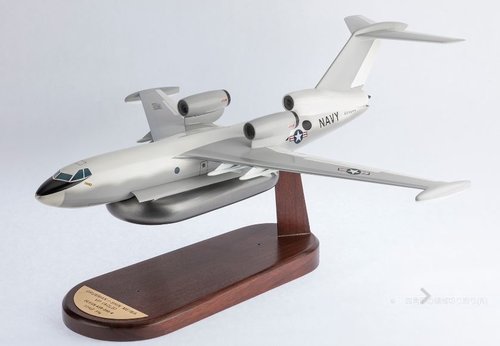Yeah , i was too. But we don't have the same humor.
You are using an out of date browser. It may not display this or other websites correctly.
You should upgrade or use an alternative browser.
You should upgrade or use an alternative browser.
Grumman / Shin Meiwa ASR-544-4
- Thread starter circle-5
- Start date
- Joined
- 27 December 2005
- Messages
- 17,712
- Reaction score
- 26,174
galgot said:Or maybe it's just from "Vehicle" ?
LowObservable said:OMG we got that from the FRENCH?????
Next you'll be telling me that the Marines' Hymn tune is from a FRENCH OPERA.... not merely that but FRENCH LIGHT OPERA. And a lyric about cowardly cops.
Nonsense!
Seriously - I wonder if Friedman has an explanation for "V" somewhere.
You know, being from an originally ex-british colony, you speak english (well, your own version, as peoples from colonies usually don't speak the correct language from their masters…) and thus use a lot of FRENCH words without knowing it… sorry.
As for the "cowardly cops" part… Seriously, I thought the "french surrendering monkeys" stuff was out of fashion these days ...tiresome to see it here.
Not sure if that joke whistled over everyone's heads or...
The Marines Hymn is set to music written by a German-born French composer from a light (comedy) opera, and specifically a song where two "gendarmes" discuss their own cowardliness.
- Joined
- 9 October 2009
- Messages
- 21,928
- Reaction score
- 13,552
Ah. Carry on! 
- Joined
- 17 October 2006
- Messages
- 2,393
- Reaction score
- 1,196
Thanks, Paul...
"The Bold Gendarmes" was a staple of Saturday morning's BBC Light Programme show. I can see why the reference might be obscure to some...
Meanwhile, permit me to let the air out of the other half of the V-and-Z speculation. Z might mean Zeppelin, but I believe that in airship circles the term Zeppelin was sometimes applied to rigid airships. In that case it would have made no sense to talk about a "rigid Zeppelin" as implied by the Navy's ZR nomenclature.
Meanwhile, the problem with the reference cited by Tom S is that volplane doesn't mean airplane and never did.
https://www.merriam-webster.com/dictionary/volplane
The first clue, I think, is that there is no generic English word for airplane, or heavier-than-air flight, that starts with V, and that there is no generic name for aerostats or aerostatics that starts with Z. The second clue is that the 1920s nomenclature system favors the beginning of the alphabet because that's where the main ship classes were. So I suspect that some civil servant, noting that A had been bagged for Armored, and that all the common words for both airships and airplanes started with A, picked V and Z out of the back of the alphabet and ran with it.
Also: together with S for Submarine, this would ensure for all time that any alphabetical listing of the fleet would put real warships first, in order of precedence - Battleship, Cruiser, Destroyer - with sneaky battery-powered tubes well in the rear, and the silly flying things behind them all.
"The Bold Gendarmes" was a staple of Saturday morning's BBC Light Programme show. I can see why the reference might be obscure to some...
Meanwhile, permit me to let the air out of the other half of the V-and-Z speculation. Z might mean Zeppelin, but I believe that in airship circles the term Zeppelin was sometimes applied to rigid airships. In that case it would have made no sense to talk about a "rigid Zeppelin" as implied by the Navy's ZR nomenclature.
Meanwhile, the problem with the reference cited by Tom S is that volplane doesn't mean airplane and never did.
https://www.merriam-webster.com/dictionary/volplane
The first clue, I think, is that there is no generic English word for airplane, or heavier-than-air flight, that starts with V, and that there is no generic name for aerostats or aerostatics that starts with Z. The second clue is that the 1920s nomenclature system favors the beginning of the alphabet because that's where the main ship classes were. So I suspect that some civil servant, noting that A had been bagged for Armored, and that all the common words for both airships and airplanes started with A, picked V and Z out of the back of the alphabet and ran with it.
Also: together with S for Submarine, this would ensure for all time that any alphabetical listing of the fleet would put real warships first, in order of precedence - Battleship, Cruiser, Destroyer - with sneaky battery-powered tubes well in the rear, and the silly flying things behind them all.
- Joined
- 16 April 2008
- Messages
- 9,586
- Reaction score
- 14,418
The actual memo that established the designation system doesn't put them in alphabetical order but does lead with battleships, then cruisers, destroyers and submarines. It also groups the carriers in as cruiser type ships and oddly enough lists aircraft themselves using the same scheme as ships (makes sense for airships, less so for aeroplanes). A for auxiliary comes fairly far down on the list.
https://www.history.navy.mil/research/library/online-reading-room/title-list-alphabetically/g/general-orders/general-order-no-541-1920-standard-nomemclature-naval-vessels.html
The influence of French shouldn't be underestimated. The US has flown mostly French planes in the Great War, and a lot of our vocabulary around aircraft was French in origin. While volplane did not mean aircraft, it was commonly used to describe heavier-than-air gliding flight. It could very easily have inspired the Navy people drafting that order. Likewise, while Zeppelins were technically rigid, the terminology wasn't all that established and the drafters could well have been inspired.
https://www.history.navy.mil/research/library/online-reading-room/title-list-alphabetically/g/general-orders/general-order-no-541-1920-standard-nomemclature-naval-vessels.html
The influence of French shouldn't be underestimated. The US has flown mostly French planes in the Great War, and a lot of our vocabulary around aircraft was French in origin. While volplane did not mean aircraft, it was commonly used to describe heavier-than-air gliding flight. It could very easily have inspired the Navy people drafting that order. Likewise, while Zeppelins were technically rigid, the terminology wasn't all that established and the drafters could well have been inspired.
- Joined
- 16 April 2008
- Messages
- 9,586
- Reaction score
- 14,418
elmayerle said:I believe the designaion "CV" comes from the tirst two US operational carriers, Lexington and Saratoga being built on battlecruiser hulls.
Can't be, because Langley was designated CV-1 in 1920, before the battlecruisers were eliminated under the the 1922 Washington Naval Treaty.
blackkite
Don't laugh, don't cry, don't even curse, but.....
- Joined
- 31 May 2007
- Messages
- 8,808
- Reaction score
- 7,684
Hi!

 ingeniumcanada.org
ingeniumcanada.org

A Puffalo! A Puffalo! My kingdom for a Puffalo!, Part 2 | The Channel
Welcome back, my eager to learn reading friend, to the continuing saga of the air cushion landing
Attachments
Last edited:
- Joined
- 25 January 2020
- Messages
- 1,279
- Reaction score
- 1,948
The aircraft was recently covered on The Drive, as well.

 www.thedrive.com
www.thedrive.com
And on Twitter by Caesar:
View: https://twitter.com/Ninja998998/status/1404261142839635972

An Air Cushion Patrol Seaplane Was Once In The Works With The U.S. And Japan
Grumman and Shin Meiwa worked together to propose an aircraft that combined aspects of a jet-powered flying-boat with an air cushion vehicle.
And on Twitter by Caesar:
View: https://twitter.com/Ninja998998/status/1404261142839635972
- Joined
- 1 April 2006
- Messages
- 11,366
- Reaction score
- 10,152
The aircraft was recently covered on The Drive, as well.

An Air Cushion Patrol Seaplane Was Once In The Works With The U.S. And Japan
Grumman and Shin Meiwa worked together to propose an aircraft that combined aspects of a jet-powered flying-boat with an air cushion vehicle.www.thedrive.com
And on Twitter by Caesar:
View: https://twitter.com/Ninja998998/status/1404261142839635972
No.
It was covered on THIS forum by late John Aldaz
then this info was re-posted at Twitter by _some_ forum member without any mention of source and then it went to TWZ.
Yes the "V" in USN requirements and squadron is for heaVier and a relic from the days when balloons were part of the US Navy aerial inventory, because " Lighter than air" and "HEAVier than air"
- with H for helicopters, so not available
- with E already taken by "electronic" as in EA-6B, so not available
- and A for attack, not available either, damn it (!)
So they took the next letter !
I red that in an Aerofax Hornet little book a loooooong time ago, obviously related to VFAX - and it blew my mind back then.
- with H for helicopters, so not available
- with E already taken by "electronic" as in EA-6B, so not available
- and A for attack, not available either, damn it (!)
So they took the next letter !
I red that in an Aerofax Hornet little book a loooooong time ago, obviously related to VFAX - and it blew my mind back then.
Last edited:
Wonder how it would fare for a Search and Rescue platform. I know the BE-200 was a multi-purpose flying boat, seems to be this could have been the same, however the cushion seems to occupy 1/3rd of the interior space.
Similar threads
-
Grumman G-698 V/STOL (US Navy "Type A" proposal)
- Started by overscan (PaulMM)
- Replies: 77
-
Boeing P-8A Poseidon (737-800EFV) MMA (Multi-mission Maritime Aircraft)
- Started by hesham
- Replies: 327
-
Advanced Tactical Support Aircraft (ATSA) US Navy
- Started by dauby09
- Replies: 22
-
Martin 313 Submaster (XP7M-1): Open Ocean ASW Seaplane
- Started by Stargazer
- Replies: 13
-


